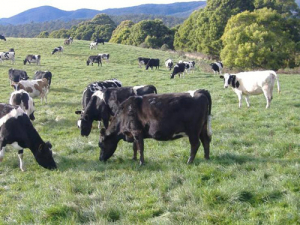Restrictions on fruits, vegetables movement in Mt Roskill
Legal controls on the movement of fruits and vegetables are now in place in Auckland’s Mt Roskill suburb, says Biosecurity New Zealand Commissioner North Mike Inglis.
 Compensation issues need to be clarified in the government’s biosecurity response guide, says a new report on New Zealand’s veterinary services.
Compensation issues need to be clarified in the government’s biosecurity response guide, says a new report on New Zealand’s veterinary services.
Compensation issues need to be clarified in the government’s biosecurity response guide, says a new report on New Zealand’s veterinary services.
This includes confirming areas where people who had suffered losses would be eligible for compensation, the report says.
This applies particularly to ‘grey’ areas such as welfare slaughter in the case of a significant disease outbreak like foot and mouth disease, or for losses because of a national livestock standstill, says the report, which compares NZ’s vet services and systems against international standards.
The report is largely complimentary but has raised some recommendations.
Systems, processes and supporting logistics need to be developed for dealing with compensation claims for medium-large responses, as the current process is “very cumbersome and unworkable,” the report says.
The ‘Whole of Government Biosecurity Response’ guide also needs to be updated to outline the future integration of government – industry agreement (GIA) partners into biosecurity responses, the report says.
The report was done in late 2015 by two evaluators from the Ministry for Primary Industries (MPI) Dr Andre van Halderen (technical expert and coordinator) and Dr Erin Daldry (lead auditor); Dr Chris Morley was the industry evaluator.
The self-evaluation of the NZ veterinary services was based on the World Organisation for Animal Health (OIE) methodology.
It was released last month.
It recommends that the roles and responsibilities regarding disease preparedness, as well as agreement on who is responsible for leading what type of response, need to be clarified.
“There should also be clear criteria and cross-organisational processes for involvement in emerging disease scenarios, particularly where non-infectious diseases are involved,” it says.
In other recommendations it says the animal welfare project should be prioritised and recommendations implemented to ensure the animal welfare system (including leadership and roles and responsibilities) is clearly understood, to allow for a more strategic approach to dealing with animal welfare issues.
The report also says that after multiple mergers and restructures of MPI needs to develop a clear, comprehensive organisational chart. This should clearly outline functions, key role holders and the main areas of interaction between the different parts of the organisation.
"This will be useful for MPI staff and stakeholders. This should be widely publicised, freely available and frequently updated to ensure currency. This should help stakeholders identify and find appropriate parties in MPI."
MPI should ensure there is systematic consultation to ensure all relevant parties are consulted and all comments considered.
It also needs to be ensured that the depth of response to consultation is appropriate for the issues raised, and that adequate time is allowed when comments are requested.
The report says the access to markets via NAIT has brought about significant improvements to animal traceability.
The review of NAIT now starting is an ideal opportunity to improve the system.
Legal controls on the movement of fruits and vegetables are now in place in Auckland’s Mt Roskill suburb, says Biosecurity New Zealand Commissioner North Mike Inglis.
Arable growers worried that some weeds in their crops may have developed herbicide resistance can now get the suspected plants tested for free.
Fruit growers and exporters are worried following the discovery of a male Queensland fruit fly in Auckland this week.
Dairy prices have jumped in the overnight Global Dairy Trade (GDT) auction, breaking a five-month negative streak.
Alliance Group chief executive Willie Wiese is leaving the company after three years in the role.
A booklet produced in 2025 by the Rotoiti 15 trust, Department of Conservation and Scion – now part of the Bioeconomy Science Institute – aims to help people identify insect pests and diseases.

OPINION: The release of the Natural Environment Bill and Planning Bill to replace the Resource Management Act is a red-letter day…
OPINION: Federated Farmers has launched a new campaign, swapping ‘The Twelve Days of Christmas’ for ‘The Twelve Pests of Christmas’ to…